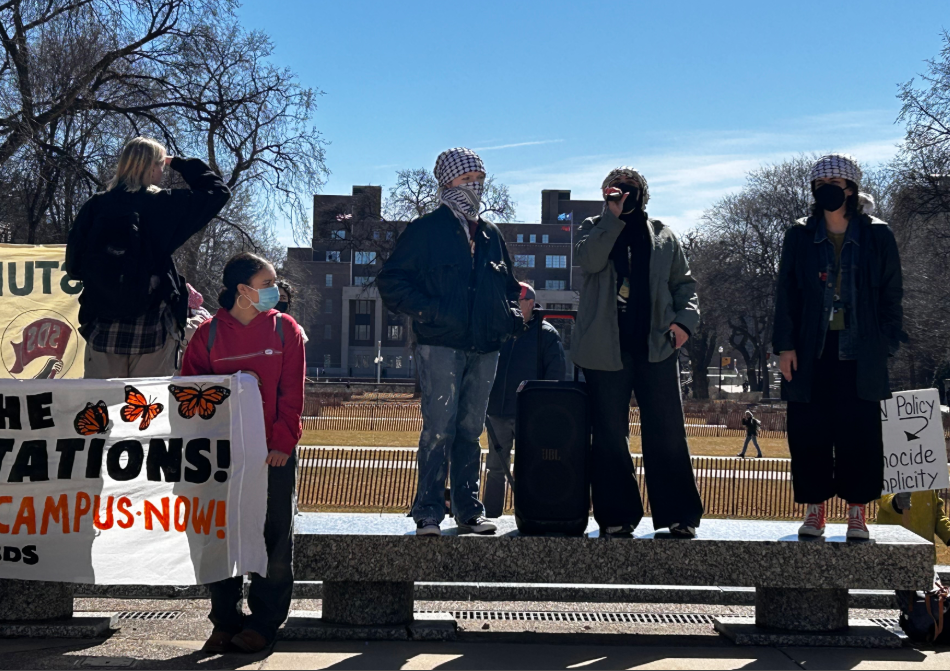A rare disease research study at the University of Minnesota is making leaps and bounds studying the progression of Friedreich ataxia and holds global promise in the search for a cure.
The study, called TRACK-FA, “is a natural history study that investigates brain and spinal cord changes in individuals with Friedreich ataxia,” a rare genetic disease that causes progressive nervous system damage and movement issues.
The rare neuromuscular disease affects about 4,000 people in the United States and 15,000 people worldwide. Currently, there is no approved treatment. Professor Pierre-Gilles Henry and Professor Christophe Lenglet, both associate professors in the Department of Radiology, said they are hoping their research may change that.
“I have a Ph.D. in neuroscience, but my background is electrical engineering,” Henry said. “So I worked at the border between technical development and the application side. I’ve always been interested in medicine, and I wanted to do something that makes a difference in the life of patients.”
There are seven sites around the world that are a part of the TRACK-FA study. The team at the University of Minnesota’s Center for Magnetic Resonance Research is in charge of coordinating the neuroimaging part of the study. They capture images of the brain and spinal cord using MRI technology to better understand disease progression.
“[MRI] is a very versatile technique and can do a lot of different things,” Henry said. “We can look at the anatomy, which is what we mostly see when we think of MRI, but we can also look at the microstructure of tissue.”
Their team has discovered the spinal cord gets smaller over time for patients with Friedreich ataxia, decreasing approximately 2.5% each year, according to Henry. He said they also learned the chemical composition of the spinal cord changes over time.
“This study will help characterize the disease, identify robust markers of disease progression and enable us to be clinical trial ready,” research associate Isaac Adanyeguh, whose role is to check the quality of imaging data and extract quantitative information from the data, said in an email to the Minnesota Daily.
Henry said they hope their research will help discover biomarkers for the disease, an objective indication of a patient’s medical state that can track the progression or effect of a treatment. These biomarkers would be able to tell doctors if a treatment is effective.
“Clinical trials must prove that symptoms improve,” Henry said. “But the ability to see what’s happening in the brain sooner can be very helpful.”
Henry said the TRACK-FA study is different from other studies on Friedreich ataxia because they use a longitudinal study to measure the disease. In these types of studies, researchers repeatedly examine the same individuals to detect any changes that might occur over a period of time.
“Most of us in the past have just compared patients and controls but have not looked at what happens over time,” Henry said. “This is one of the first studies to look at longitudinal data.”
So far, 75 people with Friedreich ataxia have participated in the TRACK-FA neuroimaging study. Participants range from 5 to 40 years old and there are three study visits that are approximately 12 months apart, according to Henry.
During every visit, each patient has a clinical exam, completes a mood questionnaire and cognitive test, has their blood drawn and receives an MRI scan of their brain and spinal cord, Henry said.
At the end of the day, the team hopes their research will help doctors find a cure for the rare neurodegenerative disease.
Diane Hutter, the nurse coordinator for the TRACK-FA study, said in an email to the Minnesota Daily that she has had the opportunity to communicate with and meet many individuals with Friedreich ataxia along with their families from all over the country. As the nurse coordinator, Hutter is the first point of contact between patients and the research study.
“Many times, individuals will have just learned about their diagnosis when it is very early in the disease … it is not uncommon for me to share with them what ataxia is,” Hutter said, whose job includes determining a patient’s eligibility and managing study data in addition to arranging and scheduling study visits.
Hutter said throughout the study, she has grown close to many patients and their families. The search for a cure has become close to her heart, she said.
“Over the years I have come to recognize them as friends, not necessarily as research participants,” Hutter said. “I always look forward to seeing them come for an annual visit, to a fundraising event or at conferences.”
Throughout the study, researchers have been able to use their skills to help patients in the search for a cure to a currently incurable disease and make a difference in the lives of Friedreich ataxia patients.
“I decided to join this study because it gave me the opportunity to put my skills to use to help individuals that are suffering from neurodegenerative disorders such as Friedreich ataxia,” Adanyeguh said.
Correction: A previous version of this article misstated Pierre-Gilles Henry’s last name. His last name is Henry.



















